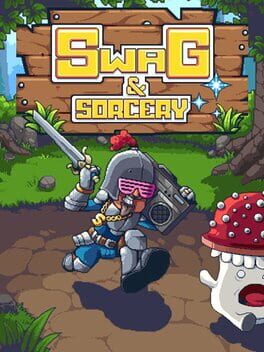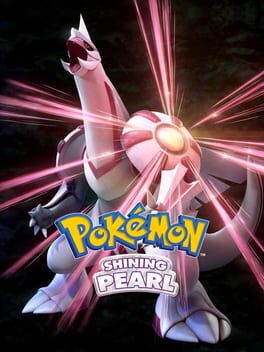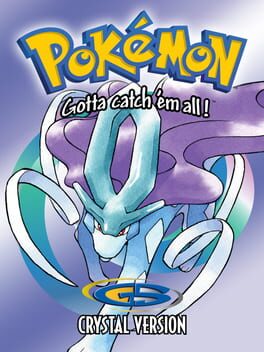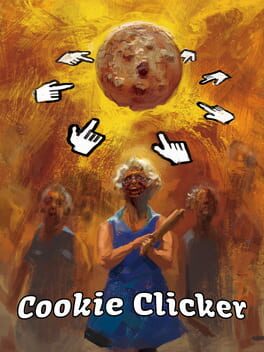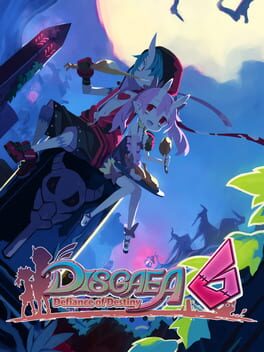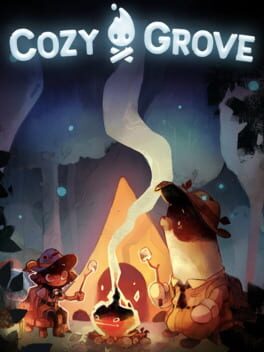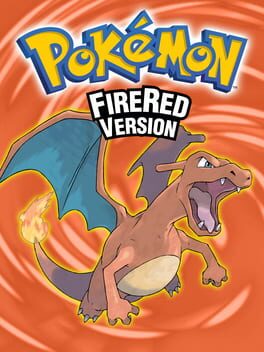kimpira
BACKER
2019
Very cute presentation, but the game's design is oddly frustrating because it always seems to be signalling that it's about to become an idle game, any second now, but the automation never kicks in. It ends up in unintentional Desert Bus territory: there's not enough going on to reward your undivided attention, but it's not possible to really set it and forget it, either.
It IS grindy and I think the reason so many reviews on Steam are citing that as a negative is because there's no sense of consistent progress, no matter how incremental. Crafting new equipment is fairly resource-intensive, and the results are randomized enough that there's no guarantee what you get is going to be better than what you started with, or even usable without leveling up your character.
It IS grindy and I think the reason so many reviews on Steam are citing that as a negative is because there's no sense of consistent progress, no matter how incremental. Crafting new equipment is fairly resource-intensive, and the results are randomized enough that there's no guarantee what you get is going to be better than what you started with, or even usable without leveling up your character.
I'm not quite finished with these games, but I thought I'd write about BDSP's launch window experience.
A change in how online features are implemented leaves this feeling quieter & more solitary than the last several entries. In Sword/Shield, you were constantly surrounded by phantoms of other players zipping around, along with a realtime feed of their activities in a sidebar to the left. The DS games don't show other players physically present in the game world, but there is a similar feed of their activities that gives the games a bustling feel.
You get some of that in BDSP via the Grand Underground, but it's very much a side-system. There's no comparable presence of other players while doing the main story.
The lack of a surprise trade feature at launch also made the game feel lonelier for me. Surprise Trade is something that a player can ignore in any of the games, but I really enjoyed sending extra pokemon into the ether during the first few weeks of Sword & Shield, before people started using it to advertise sites that sell genned monsters.
BDSP are definitely the games you want if you're looking to collect shinies. The shiny charm only applies to hatching eggs this time, but that nerf is more than made up for by how easy it is to find shiny pokemon in the wild by chaining encounters with the PokeRadar. Your odds of finding a shiny with the radar max at about 1 in 100, but it rolls 4 separate encounters at a time AND allows you to see if they're shiny in advance. I've almost always found multiples when I get a chain long enough to max my odds.
While this remake fixes the extreme slowness of the gen 4 games, moving around the world mostly doesn't feel very nice. Moving via analog stick frees you from the grid, but the environmental collision boxes retain their right angles, stopping you dead when any part of your character catches on them. This is especially noticeable when going through doors and in the cluttered environments of the Grand Underground.
A change in how online features are implemented leaves this feeling quieter & more solitary than the last several entries. In Sword/Shield, you were constantly surrounded by phantoms of other players zipping around, along with a realtime feed of their activities in a sidebar to the left. The DS games don't show other players physically present in the game world, but there is a similar feed of their activities that gives the games a bustling feel.
You get some of that in BDSP via the Grand Underground, but it's very much a side-system. There's no comparable presence of other players while doing the main story.
The lack of a surprise trade feature at launch also made the game feel lonelier for me. Surprise Trade is something that a player can ignore in any of the games, but I really enjoyed sending extra pokemon into the ether during the first few weeks of Sword & Shield, before people started using it to advertise sites that sell genned monsters.
BDSP are definitely the games you want if you're looking to collect shinies. The shiny charm only applies to hatching eggs this time, but that nerf is more than made up for by how easy it is to find shiny pokemon in the wild by chaining encounters with the PokeRadar. Your odds of finding a shiny with the radar max at about 1 in 100, but it rolls 4 separate encounters at a time AND allows you to see if they're shiny in advance. I've almost always found multiples when I get a chain long enough to max my odds.
While this remake fixes the extreme slowness of the gen 4 games, moving around the world mostly doesn't feel very nice. Moving via analog stick frees you from the grid, but the environmental collision boxes retain their right angles, stopping you dead when any part of your character catches on them. This is especially noticeable when going through doors and in the cluttered environments of the Grand Underground.
I've made it a project to finally finish all the older Pokemon games in roughly chronological order, and now I've finally wrapped up Gen 2.
I'm old and nerdy enough to have played partially-translated versions of Red and Green on No$GMB before they ever came out in the US. I wasn't quite grown, but I was definitely older than the target audience and approached the games as a fan of console RPGs. I was really impressed by how ambitious the games were: a huge amount of monsters that were all playable & with designs that broke away from the medieval fantasy rut that most RPGs were still stuck in.
So with that in mind, Gen 2 is still a big jump in ambition for a handheld RPG. It adds a breeding system, holdable items & a realtime clock that enables a host of subfeatures like daily events, nocturnal/diurnal monsters, time-specific evolutions and moves that vary according to in-game light levels.
And then there's Kanto, a post-game that's nearly as large as the base game. (Though much faster to complete, since the mons in most areas are pretty low level.)
The game's story is barely there, as always, but I do like how your Gen 2 rival is just some guy who sucks. He's not even the final trainer you have to beat to become the champion.
I'm old and nerdy enough to have played partially-translated versions of Red and Green on No$GMB before they ever came out in the US. I wasn't quite grown, but I was definitely older than the target audience and approached the games as a fan of console RPGs. I was really impressed by how ambitious the games were: a huge amount of monsters that were all playable & with designs that broke away from the medieval fantasy rut that most RPGs were still stuck in.
So with that in mind, Gen 2 is still a big jump in ambition for a handheld RPG. It adds a breeding system, holdable items & a realtime clock that enables a host of subfeatures like daily events, nocturnal/diurnal monsters, time-specific evolutions and moves that vary according to in-game light levels.
And then there's Kanto, a post-game that's nearly as large as the base game. (Though much faster to complete, since the mons in most areas are pretty low level.)
The game's story is barely there, as always, but I do like how your Gen 2 rival is just some guy who sucks. He's not even the final trainer you have to beat to become the champion.
2016
A free furry VN done in RPG Maker. This is a pure visual novel despite the engine, so there’s no exploration or combat. Unfortunately, it’s missing some standard amenities that come with dedicated VN software: there’s no transcript, no rewinding, and no fastforwarding past already-seen dialogue. Because the game is implemented as a long, branching tree of cutscenes, the player is only able to save when prompted, which happens every 2-3 scenes.
The character designs are like... orthodox furry? Like dead center of the furry aesthetic. Bright blue and pink bunny people, red and magenta streaks in their hair, everyone's sort of dressed for an early 2000s rave.
The writing is pretty rough. It's a rapid fire series of anime/manga/vn cliches and packed with shocking revelations and twists that don't amount to much. I saved this quote because it captures the vibe of the writing in 3 lines: "I knew that my journey had finally come to an end. And I also knew that I'd never open my eyes again. But when they did -- they'd see the future I created."
Major/Minor is impressively long and ambitious for a free VN but it's also not long enough to establish the weighty character relationships that they're trying for. The protag is supposed to be inspiring heroic feats of will off of saying "Hm, I agree" three times to a guy they met yesterday. The game's high point is about halfway through, when the player is presented with a cruel life-and-death decision. It stands out among the other branches because the stakes are high and the immediate consequences are obvious. The game never hits that clarity of narrative design anywhere else.
I got the normal ending on my first run, and for now I think that's good enough for me.
The character designs are like... orthodox furry? Like dead center of the furry aesthetic. Bright blue and pink bunny people, red and magenta streaks in their hair, everyone's sort of dressed for an early 2000s rave.
The writing is pretty rough. It's a rapid fire series of anime/manga/vn cliches and packed with shocking revelations and twists that don't amount to much. I saved this quote because it captures the vibe of the writing in 3 lines: "I knew that my journey had finally come to an end. And I also knew that I'd never open my eyes again. But when they did -- they'd see the future I created."
Major/Minor is impressively long and ambitious for a free VN but it's also not long enough to establish the weighty character relationships that they're trying for. The protag is supposed to be inspiring heroic feats of will off of saying "Hm, I agree" three times to a guy they met yesterday. The game's high point is about halfway through, when the player is presented with a cruel life-and-death decision. It stands out among the other branches because the stakes are high and the immediate consequences are obvious. The game never hits that clarity of narrative design anywhere else.
I got the normal ending on my first run, and for now I think that's good enough for me.
2013
Prior to its release on steam, I assumed Cookie Clicker was one of those exploitative Facebook games. In reality, it was a parody game that kind of got out of hand. The $5 Steam pricetag could be considered a sort of one-off donation to the developer, as the web original is still freely accessible and updated in tandem.
Rather than manipulating players into real money transactions, it actually encourages tampering to the extent that there are even achievements for both modding the game and directly manipulating your number of cookies via the javascript console.
With Disgaea 6 and now this, I'm getting more and more interested in games that mimic traditional genres but abstract away smaller repetitive actions and instead emphasize programming, modding, and other kinds of customization.
Rather than manipulating players into real money transactions, it actually encourages tampering to the extent that there are even achievements for both modding the game and directly manipulating your number of cookies via the javascript console.
With Disgaea 6 and now this, I'm getting more and more interested in games that mimic traditional genres but abstract away smaller repetitive actions and instead emphasize programming, modding, and other kinds of customization.
It's a solid entry in the series. The main character Zed stands out from the pack of Disgaea protags in both his personality and design. Most of the other Disgaea leads are born to authority or privilege, but he's just some zombie that wants revenge. A sort of revenant. His determination to get back up no matter how many times he's destroyed fits nicely with the reincarnation mechanics of the Disgaea series.
A lot of systems have been simplified in this, to the point that Disgaea 6 might have made more sense as a side-game. The distinction between monsters and humanoids, present in all the previous games, has been dropped.
The Disgaea games have always been designed to make you feel like you're getting away with something. From game one you were able to bribe or bully the senators that were there to constrain your power, and for several games now there's been a there's been a "cheat shop" that lets you directly manipulate multipliers for money, experience and other rewards.
Disgaea 6 adds to this with the Juice Bar, which allows you to directly purchase mana, experience, weapon and class levels for a character from a collective pool that gradually fills up as you finish battles. It works because it starts off as prohibitively expensive, but the money adds up and soon you notice that you can instantly master a weapon that was previously hovering at around level 8 of 100.
Disgaea is about making numbers larger, but more specifically it's about the slow climbs, plateaus and sudden orders-of-magnitude accelerations designed into it.
The game's other major innovation in making you feel like you're cheating despite playing the game as intended is its new user-programmable autobattle system. If you're not strong enough to clear a level on your first try, there's no need to manually plink away at lesser enemies till you're ready to go again. You can just auto-replay older levels until you're strong enough (or wealthy enough to purchase the strength) to continue.
You don't even have to manually win battles the first time you do them, either. There are a handful that are complex enough to require manual navigation, but it's largely up to you whether you want to focus on preplanning and AI programming or manually guiding your characters in order to do more with less.
This makes the game friendlier to players that may have an RSI, but that doesn't seem to be fully intentional. Other parts of the game fairly encourage repetitive stress, like the character-specific achievements (D-merits) for things that cannot be automated, like using the Juice Bar 255 times.
A lot of systems have been simplified in this, to the point that Disgaea 6 might have made more sense as a side-game. The distinction between monsters and humanoids, present in all the previous games, has been dropped.
The Disgaea games have always been designed to make you feel like you're getting away with something. From game one you were able to bribe or bully the senators that were there to constrain your power, and for several games now there's been a there's been a "cheat shop" that lets you directly manipulate multipliers for money, experience and other rewards.
Disgaea 6 adds to this with the Juice Bar, which allows you to directly purchase mana, experience, weapon and class levels for a character from a collective pool that gradually fills up as you finish battles. It works because it starts off as prohibitively expensive, but the money adds up and soon you notice that you can instantly master a weapon that was previously hovering at around level 8 of 100.
Disgaea is about making numbers larger, but more specifically it's about the slow climbs, plateaus and sudden orders-of-magnitude accelerations designed into it.
The game's other major innovation in making you feel like you're cheating despite playing the game as intended is its new user-programmable autobattle system. If you're not strong enough to clear a level on your first try, there's no need to manually plink away at lesser enemies till you're ready to go again. You can just auto-replay older levels until you're strong enough (or wealthy enough to purchase the strength) to continue.
You don't even have to manually win battles the first time you do them, either. There are a handful that are complex enough to require manual navigation, but it's largely up to you whether you want to focus on preplanning and AI programming or manually guiding your characters in order to do more with less.
This makes the game friendlier to players that may have an RSI, but that doesn't seem to be fully intentional. Other parts of the game fairly encourage repetitive stress, like the character-specific achievements (D-merits) for things that cannot be automated, like using the Juice Bar 255 times.
2021
A gently spooky errand simulator set on an island populated by ghosts of the blocky little bears that are Spry Fox's trademark.
While it's heavily influenced by Animal Crossing with its realtime clock and seasonal changes to available resources, there's more focus on narrative. The ghosts all have pre-authored stories that they gradually reveal as you complete their requests.
Like Animal Crossing, there are a lot of decoration items to find or craft, but the game's island is a lot more resistant to player intervention. There are a few empty areas set aside for player use, but don't expect to remake the whole island in your image. Natural features like trees cannot be moved, except for the ones you place yourself.
A lot about the game falls into place when you realize it was built to be a hidden object game: the default state of the island is a monochrome line drawing densely cluttered with randomly placed objects that get reshuffled every day. Only your campsite and your ghostly neighbors remain as fixed points.
When you complete a ghost's errand for the day, they give off a light that colors in everything in their section of the island, making it easier to find things you might have overlooked. Any lanterns placed in an illuminated region will light up and cast their own circle of light, making it possible to chain lanterns and persistently illuminate some of the farther spots of the island.
The island grows in size as you make friends with more and more spirits, and after a certain point it was no longer really feasible to fulfill hidden object quests without purchasing hints from one of the bears. Eventually I started ignoring any requests that weren't strictly necessary to advance a bear's storyline, which maybe undermines the empathy-generating goals of Cozy Grove's design.
While it's heavily influenced by Animal Crossing with its realtime clock and seasonal changes to available resources, there's more focus on narrative. The ghosts all have pre-authored stories that they gradually reveal as you complete their requests.
Like Animal Crossing, there are a lot of decoration items to find or craft, but the game's island is a lot more resistant to player intervention. There are a few empty areas set aside for player use, but don't expect to remake the whole island in your image. Natural features like trees cannot be moved, except for the ones you place yourself.
A lot about the game falls into place when you realize it was built to be a hidden object game: the default state of the island is a monochrome line drawing densely cluttered with randomly placed objects that get reshuffled every day. Only your campsite and your ghostly neighbors remain as fixed points.
When you complete a ghost's errand for the day, they give off a light that colors in everything in their section of the island, making it easier to find things you might have overlooked. Any lanterns placed in an illuminated region will light up and cast their own circle of light, making it possible to chain lanterns and persistently illuminate some of the farther spots of the island.
The island grows in size as you make friends with more and more spirits, and after a certain point it was no longer really feasible to fulfill hidden object quests without purchasing hints from one of the bears. Eventually I started ignoring any requests that weren't strictly necessary to advance a bear's storyline, which maybe undermines the empathy-generating goals of Cozy Grove's design.
When Pokemon Home launched, I realized that it was now possible to transfer pokemon from all the way back to the third generation up to the newest game. I also realized that I hadn't actually played FireRed/LeafGreen at the time!
Impressions:
- I've had enough time to get used to the modern 3D models in later games that a return to the 2D battle sprites is delightful.
- There's a neat "Last time on..." presentation that plays when you load a saved game. It'll show you the last 4 actions you took, along the lines of, "You left Mount Moon. You spent $1000 on pokeballs."
- The game was released with a wireless adapter of some kind, and that's unfortunately the only way to trade wirelessly. Despite the presence of a GBA cart slot on early NDS models, it can't take advantage of the DS' built-in wireless. And since my model of DS does not have a link cable port, the easiest way to trade gen 3 monsters in 2020 seems to involve save-dumping your carts and using a 3rd party desktop save-editing program designed for this purpose.
Impressions:
- I've had enough time to get used to the modern 3D models in later games that a return to the 2D battle sprites is delightful.
- There's a neat "Last time on..." presentation that plays when you load a saved game. It'll show you the last 4 actions you took, along the lines of, "You left Mount Moon. You spent $1000 on pokeballs."
- The game was released with a wireless adapter of some kind, and that's unfortunately the only way to trade wirelessly. Despite the presence of a GBA cart slot on early NDS models, it can't take advantage of the DS' built-in wireless. And since my model of DS does not have a link cable port, the easiest way to trade gen 3 monsters in 2020 seems to involve save-dumping your carts and using a 3rd party desktop save-editing program designed for this purpose.
